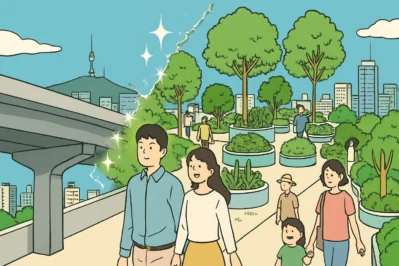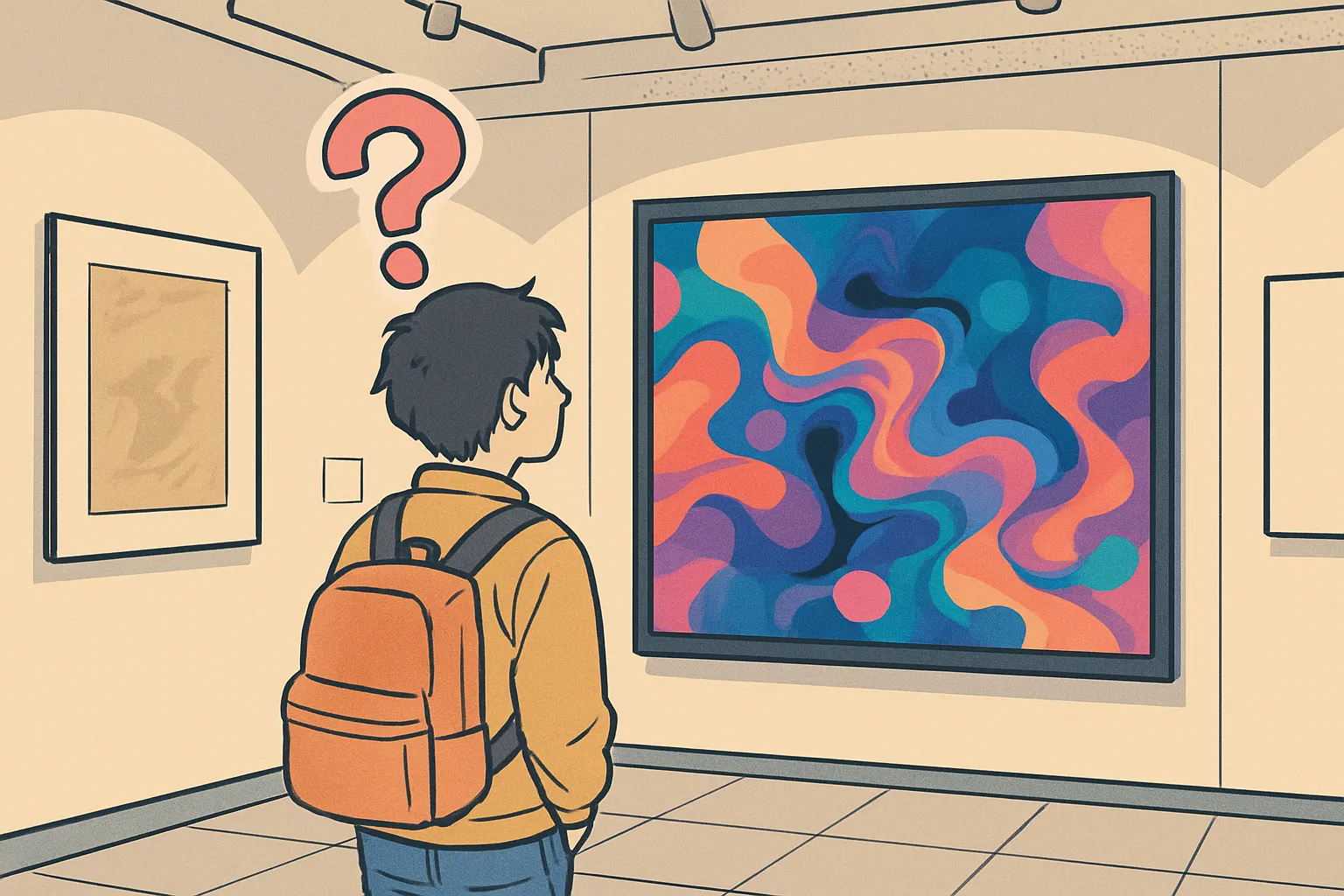Crafting the Future: Writing About Korea’s Public Spaces
Hello! Welcome back to [Maeil Hangeul], where we upgrade your Korean skills to the next level!
Are you ready to move beyond everyday conversation and tackle more complex, academic topics? Today, we’re diving into the sophisticated world of urban planning and sustainable development. We’ll learn the essential vocabulary and structures you need to write a compelling essay on the role and design of public spaces. Lately in Korea, there’s a massive focus on urban regeneration (도시재생) and creating people-centric spaces. From revitalized streams like Cheonggyecheon to repurposed highways like Seoullo 7017, the country is buzzing with new ideas about city life. Being able to discuss and write about this topic will not only make your Korean sound incredibly advanced but also connect you to a core issue in modern Korean society.
Core Expressions for Your Essay
Here are some high-level expressions that will make your writing sound polished and academic.
- 한국어 표현: ~을/를 고찰하다
- 발음 [로마자]: ~eul/reul go-chal-ha-da
- 영어 뜻: To contemplate; to examine in depth; to give serious consideration to.
- 상세 설명: This is a formal, academic verb perfect for an essay’s thesis statement. It implies a much deeper, more thorough investigation than simply ‘생각하다’ (to think) or ‘분석하다’ (to analyze). Use it when you want to convey that you are exploring the fundamental nature or various aspects of a subject.
- 한국어 표현: 지속가능성
- 발음 [로마자]: ji-sok-ga-neung-seong
- 영어 뜻: Sustainability
- 상세 설명: This is a critical keyword in any modern discussion about development. It refers to the capacity to endure, encompassing environmental, social, and economic dimensions. You’ll often see it in phrases like ‘지속가능한 개발’ (sustainable development) and ‘지속가능성을 확보하다’ (to secure sustainability). Using this term correctly shows you are familiar with contemporary global and Korean policy discourse.
- 한국어 표현: 유기적으로 연결되다
- 발음 [로마자]: yu-gi-jeo-geu-ro yeon-gyeol-doe-da
- 영어 뜻: To be organically connected/linked.
- 상세 설명: This beautiful phrase describes a natural, seamless, and interdependent relationship between different elements. In urban design, it’s used to argue that a public space shouldn’t exist in isolation but should be intricately woven into the fabric of the surrounding community, economy, and environment. It suggests a holistic and well-integrated design.
- 한국어 표현: 담론을 형성하다
- 발음 [로마자]: dam-non-eul hyeong-seong-ha-da
- 영어 뜻: To form/shape a discourse.
- 상세 설명: This is a very advanced phrase common in critical theory and academic writing. It refers to the process of creating a specific framework of conversation, debate, and understanding around a topic. A powerful essay doesn’t just present facts; it aims to shape the discourse on its subject, influencing how others think and talk about it.
Example Discussion (Planning an Essay)
Let’s see how two university students might use these terms while planning their essay.
A: 이번 도시계획 에세이에서는 공공 공간의 사회적 역할에 대해 심도 있게 고찰하고 싶어.
(For this urban planning essay, I want to examine in depth the social role of public spaces.)
B: 좋은 주제야. 특히 환경적 지속가능성 측면을 강조하면 더 의미가 있을 것 같아.
(Great topic. I think it would be more meaningful if we emphasize the aspect of environmental sustainability.)
A: 맞아. 성공적인 공공 공간은 주변 상권 및 주거 지역과 유기적으로 연결되어 지역 전체에 활력을 불어넣지.
(Exactly. Successful public spaces are organically connected with the surrounding commercial and residential areas, revitalizing the entire region.)
B: 우리 에세이가 시민 참여의 중요성에 대한 새로운 담론을 형성하는 계기가 되었으면 좋겠다.
(I hope our essay can help form a new discourse on the importance of citizen participation.)
Culture Tip & Trend Deeper Dive
In contemporary Korea, the keyword in urban planning is no longer ‘개발’ (development) in the sense of building something new from scratch. Instead, the focus has shifted to ‘재생’ (regeneration). This involves breathing new life into existing, often neglected, urban areas.
Projects like ‘Seoullo 7017’, which transformed an old, elevated highway into a public park and pedestrian walkway, are perfect examples. When you write your essay, referencing such real-life projects shows deep cultural and contextual understanding. You could argue that Seoullo 7017’s success lies in how it 유기적으로 연결되다 to the areas around Seoul Station, promoting both pedestrian-friendliness and economic 지속가능성. By analyzing these projects, your essay can actively participate in the ongoing 담론 about the future of Korean cities.
Let’s Wrap Up & Practice!
Today, we learned four powerful expressions to elevate your academic writing on urban planning: 고찰하다, 지속가능성, 유기적으로 연결되다, and 담론을 형성하다. These terms will help you articulate complex ideas with precision and sophistication.
Now, it’s your turn to practice!
- Fill in the blank:
본 연구는 현대 도시에서 공공 도서관의 역할 변화를 ( )는 것을 목표로 한다.
(This study aims to ___________ the changing role of public libraries in modern cities.) -
Short Writing Prompt:
Using at least two of the expressions learned today, write one sentence that could serve as a thesis statement for an essay about your city’s most famous public park.
Leave your answers in the comments below! We are excited to see the sophisticated arguments you can build with these new tools. Keep up the fantastic work






